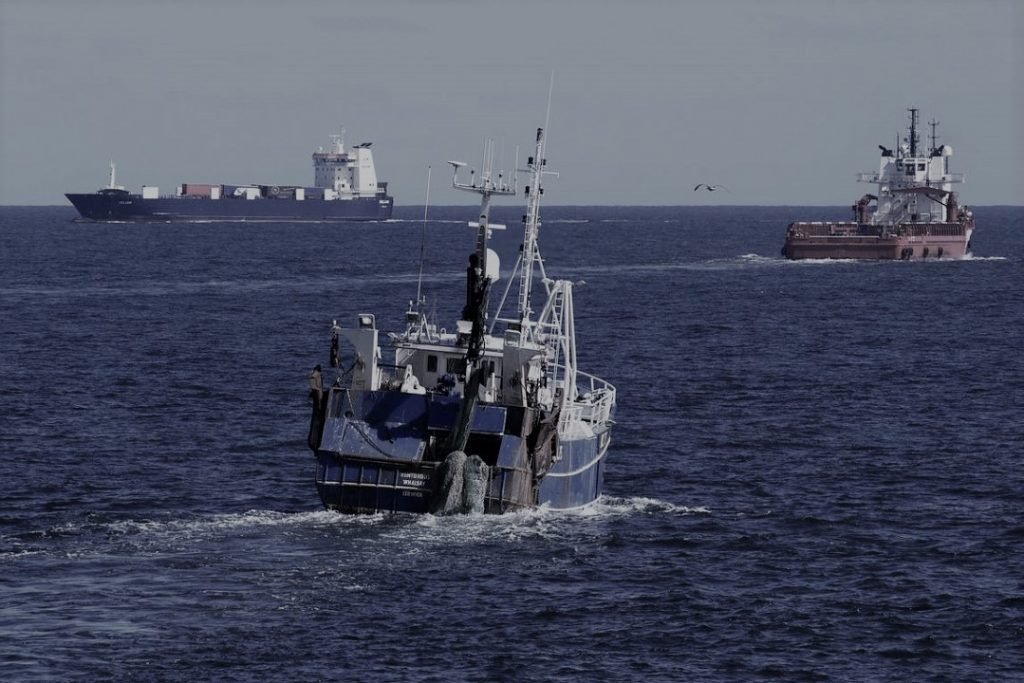CRIMSON: Critical Maritime Routes
In collaboration with the European Union, RUSI Europe’s CRIMSON project aims to promote regional and trans-regional cooperation to overcome the fragmented approach that arises from different levels of capacity and interest among littoral states; contributing to creating trans-regional synergies and increase maritime security and safety of critical maritime routes. The project focuses on two main regions (the Wider Indian Ocean and the Gulf of Guinea).
In addition to monitoring and evaluation (M&E) activities, CRIMSON works to enhance the visibility of Critical Maritime Routes (CMR) components, highlighting their impact on the ground. To achieve this goal, CRIMSON has developed a range of products, including a new CMR website, a CMR video, short animated films and a CMR dashboard.
The project also has an ‘expert analysis’ role and provides analytical inputs to the CMR programme. As such, CRIMSON produces briefs and analysis on emerging trends, threats and policy shifts in key areas along the critical maritime routes.
Project phases
- CRIMSON I (2011-2014) was implemented by the Défense Conseil International (DCI).
- (CRIMSON II, 2015-2019) was managed by RUSI Europe.
- RUSI Europe is also currently implementing the third phase of CRIMSON that will last until January 2024.
Reports and Studies
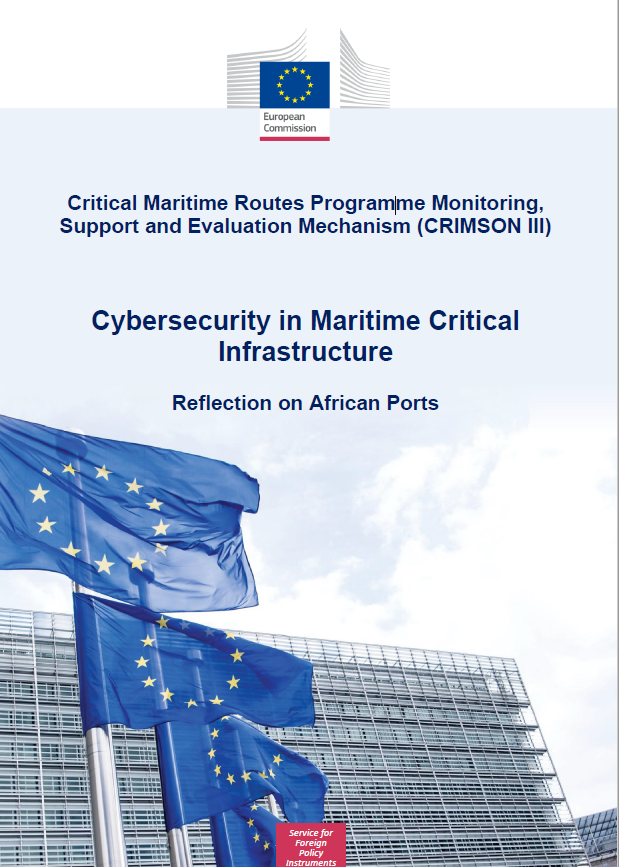
Cybersecurity in Maritime Critical Infrastructure: Reflection on African Ports
Modern commercial ports are a critical infrastructure which is highly dependent on information systems. The security of a port thus relies on the integrity of both physical and cyber assets. Despite evidence that ports are becoming targets for hackers, whose attacks can affect both cyber and physical assets and halt operations, too many ports have inadequate cybersecurity. Physical threats, incidents, and accidents to the physical assets (e.g., terminals, gates, buildings) of the maritime infrastructures or cyber threats and attacks to the cyber assets (e.g., Port Community Systems, navigation systems) can jeopardise the maritime operations, disrupt supply chains and destroy international trade and commerce.
Other available languages: French, Portuguese, and Spanish.
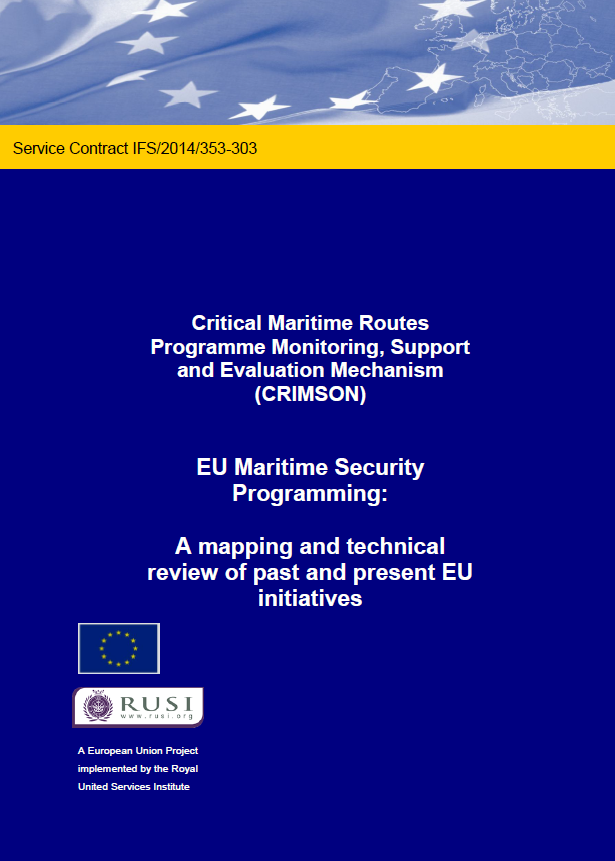
The Economic Costs and Socio-economic Impacts of Maritime Threats in the Gulf of Guinea
Given the critical role of the maritime domain to security, governance, and prosperity in the Gulf of Guinea, both at sea and onshore, this report seeks to provide a clearer understanding of the trends in illicit activities at sea in the region and costs they impose, both financial and socioeconomic. The report looks specifically at three forms of maritime threats: piracy and armed robbery at sea, maritime trafficking of arms, wildlife, and drugs, and IUU fishing, across 19 states from Cabo Verde to Angola.
Maps
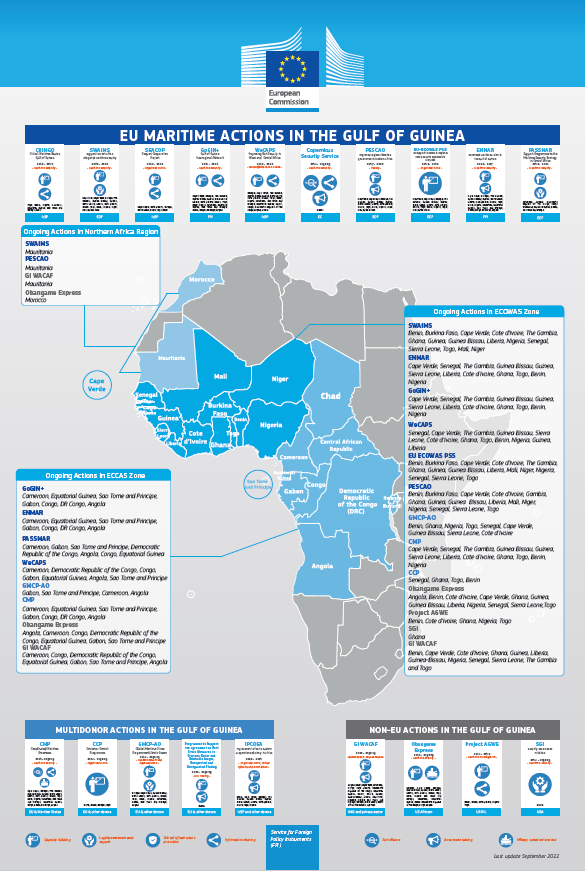
EU Maritime Actions In The Gulf Of Guinea
Learn more about the EU's Maritime Actions in the Gulf of Guinea by downloading our infographic.
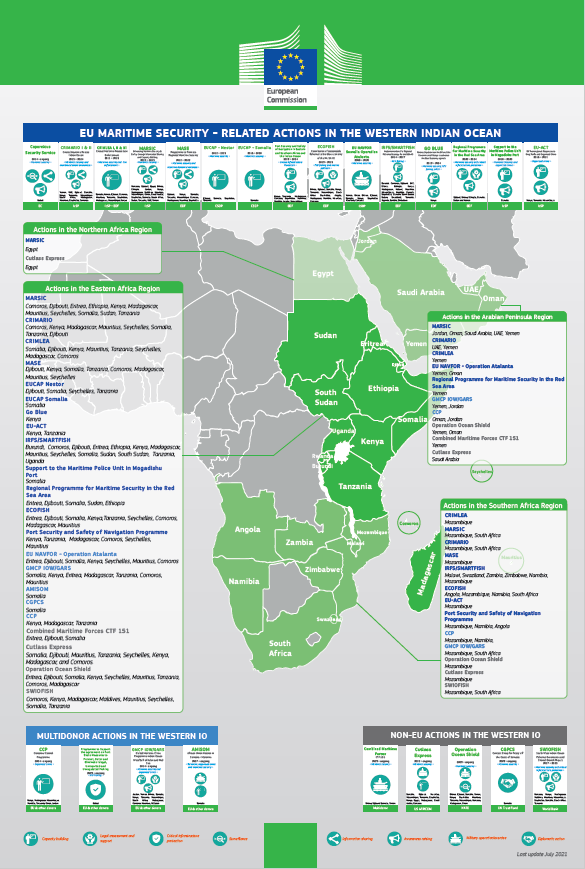
EU Maritime Security-Related Actions In The Western Indian Ocean
Learn more about the EU's maritime security-related actions in the Western Indian Ocean by downloading our infographic.
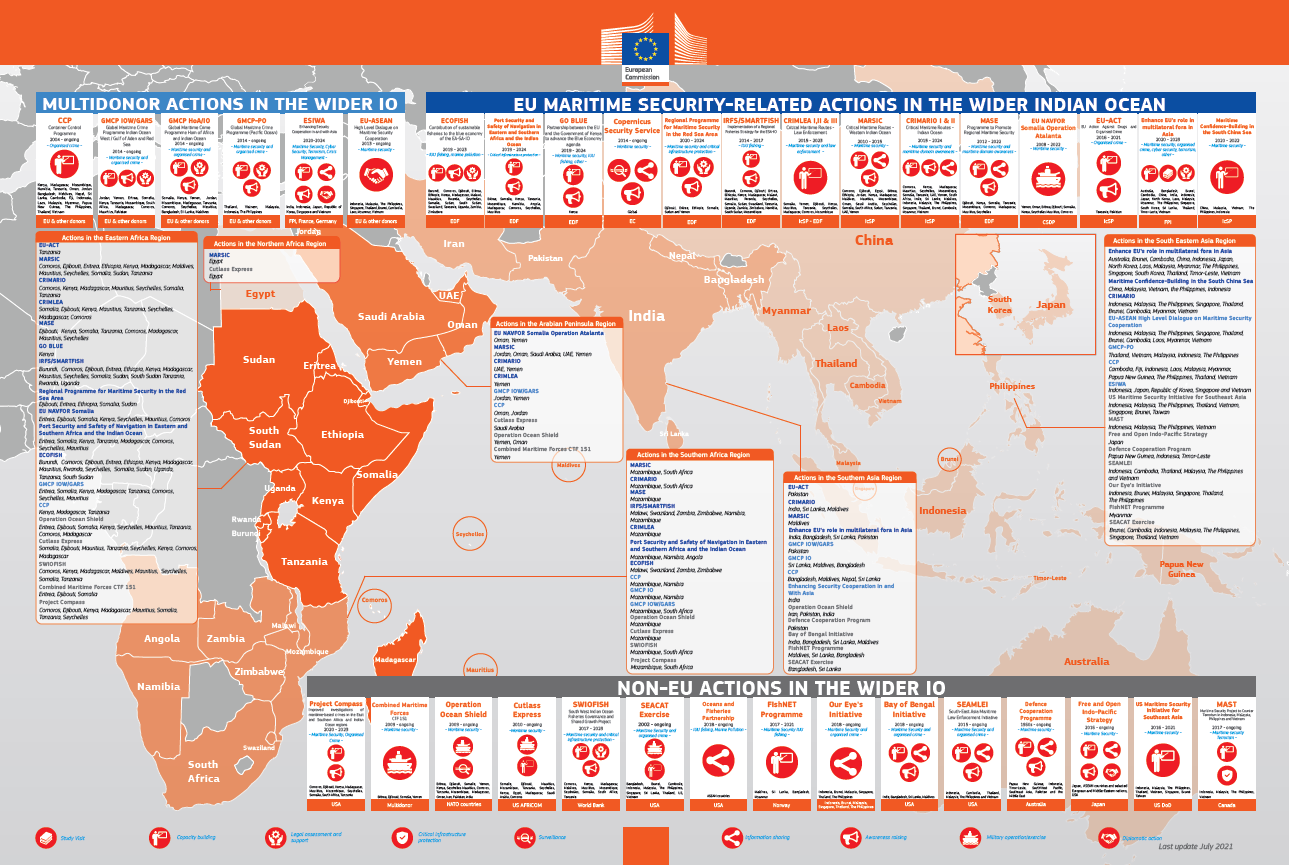
EU Maritime Security-Related Actions In The Wider Indian Ocean
Learn more about the EU's maritime security-related actions in the wider Indian Ocean by downloading our infographic.
News posts
- Interconnecting national maritime agencies to strengthen maritime security and safety, and sustainable fisheries in the Philippines and in the wider Indo-Pacific region – 21 March 2023
- G7++ Friends of the Gulf of Guinea (FoGG) Plenary Session in Abidjan – 25 January 2023
- Addressing maritime safety and security threats through IORIS – 23 January 2023
- Grand Africa Nemo 2022: the fundamental role of the YARIS platform in the Gulf of Guinea – 15 November 2022
- CRIMARIO II launch IORIS Version 3 (V3) – 15 November 2022
- CRIMSON organises the “Gulf of Guinea EU Maritime Actions Meeting” in Brussels – 15 November 2022
- The strategic importance of the Indian Ocean: international maritime actors in the region – 20 July 2022
- 5th EU-ASEAN Security and Defence Policy Seminar – 20 July 2022
- CRIMARIO sponsors the Djibouti Code of Conduct High Level Meeting – 20 July 2022
Rapports – en français
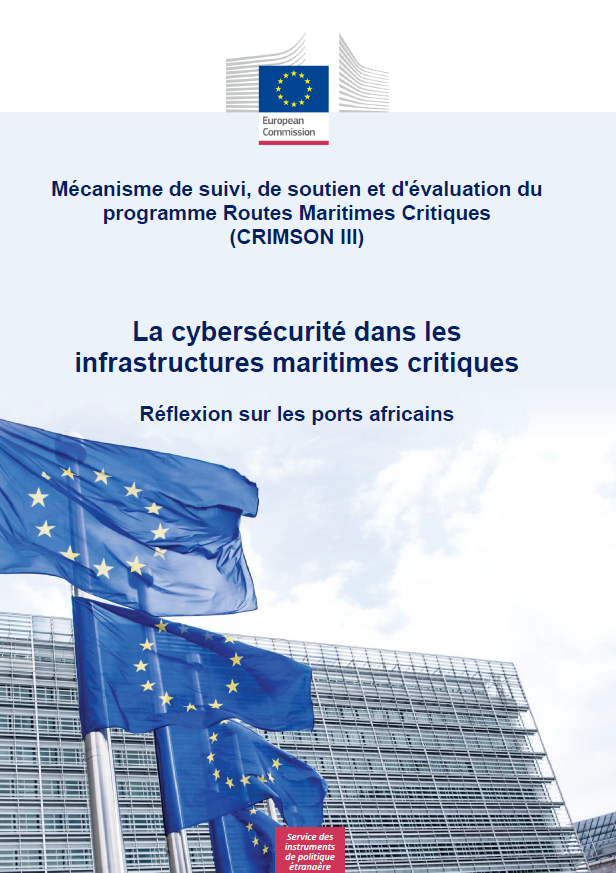
La cybersécurité dans les infrastructures maritimes critiques : Réflexion sur les ports africains
Les ports commerciaux modernes sont des infrastructures critiques qui dépendent fortement des systèmes d'information. La sécurité d'un port repose donc sur l'intégrité des installations physiques et électroniques. Il a été prouvé que les ports deviennent des cibles pour les pirates informatiques. En effet, leurs attaques peuvent affecter à la fois les installations informatiques et physiques, et interrompre les opérations. Malgré ce constat, trop de ports disposent d’une cybersécurité inadéquate. Les menaces physiques, les incidents et les accidents qui touchent les installations physiques (terminaux, portes, bâtiments) des infrastructures maritimes, ou encore les menaces et les attaques informatiques qui touchent des installations telles que les systèmes communautaires portuaires et les systèmes de navigation peuvent compromettre les opérations maritimes, perturber les chaînes d'approvisionnement et porter un coup fatal au commerce et aux échanges internationaux.
Cartes – en français
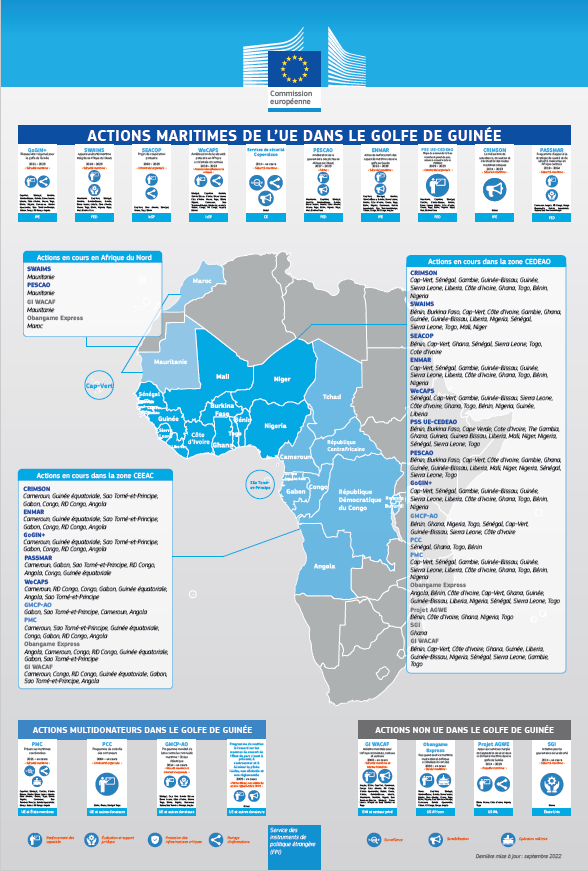
Actions maritimes de l’UE dans le golfe de Guinée
Apprenez plus sur les actions de l’UE relatives à la sécurité maritime dans le golfe de Guinée avec notre infographique.
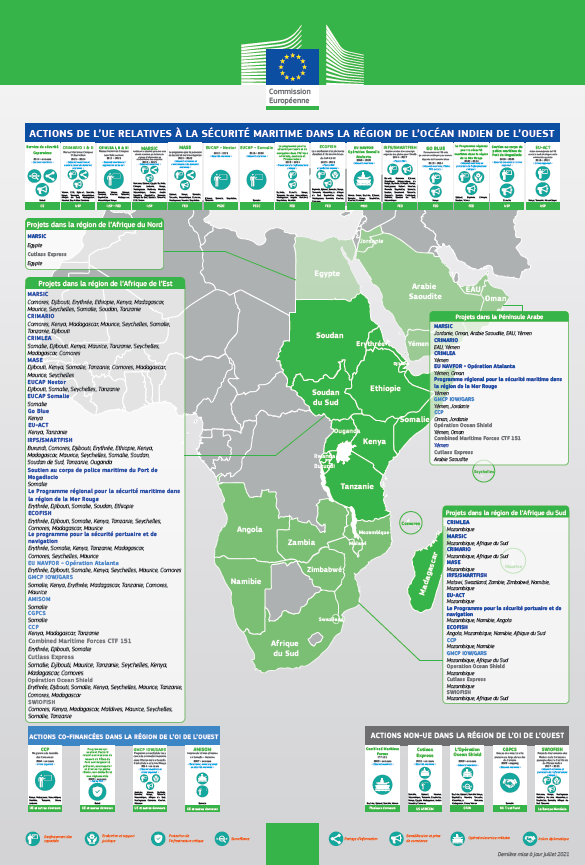
Actions de l’UE relatives à la sécurité maritime dans la région de l’Océan Indien de l’Ouest
Apprenez plus sur les actions de l’UE relatives à la sécurité maritime dans la région de l’Océan Indien de l’Ouest avec notre infographique.
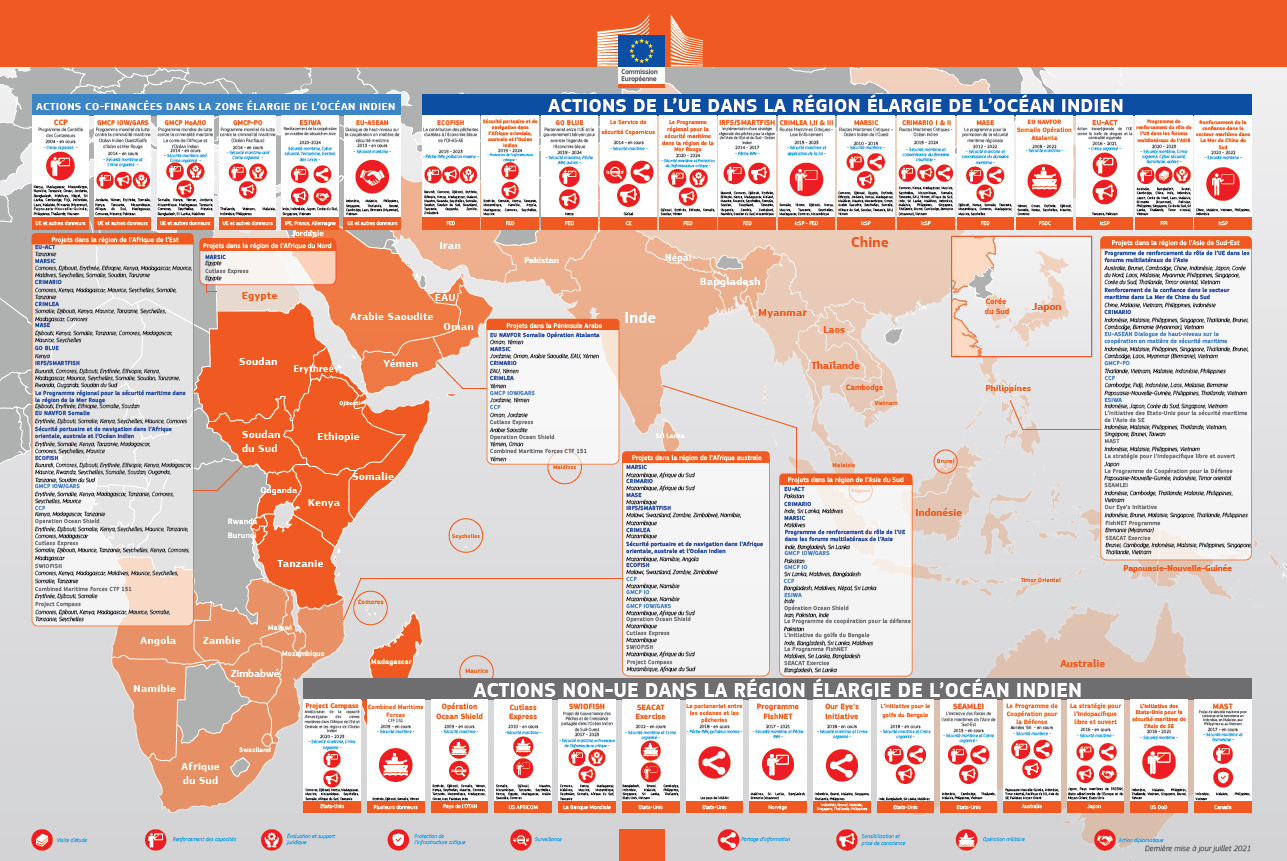
Actions de l’UE dans la région élargie de l’Océan Indien
Apprenez plus sur les actions de l’UE relatives à la sécurité maritime dans la région élargie de l’Océan Indien avec notre infographique.
Nouvelles – en français
- Réunion à Abidjan du Groupe G7++ des amis du golfe de Guinée – 26 janiver 2023
- Faire face aux menaces pour la sécurité et la sûreté maritimes grâce à IORIS – 23 janvier 2023
- Grand African Nemo 2022: le rôle essentiel de la plateforme YARIS dans le Golfe de Guinée – 23 novembre 2022
- CRIMARIO II lance la version 3 de IORIS – 23 novembre 2022
- CRIMSON organise la “Réunion sur les actions maritimes de l’UE dans le Golfe de Guinée” à Bruxelles – 23 novembre 2022
- L’importance stratégique de l’océan Indien: les acteurs maritimes internationaux dans la région – 22 juillet 2022
- 5e séminaire UE-ASEAN sur la politique de sécurité et de défense – 22 juillet 2022
- CRIMARIO finance la réunion de haut niveau du Code de conduite de Djibouti – 22 juillet 2022


